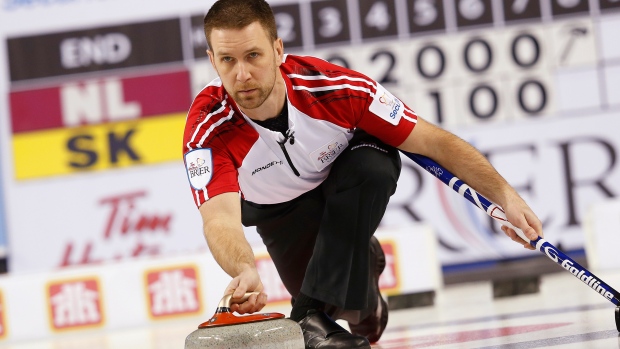Jun 17, 2016
Curling Canada announces new concussion protocol
Athletes who suffer suspected head injuries at Curling Canada-operated events will be subject to a return-to-play protocol, it was announced today at Curling Canada’s National Curling Congress in Cornwall, Ont.

Athletes who suffer suspected head injuries at Curling Canada-operated events will be subject to a return-to-play protocol, it was announced today at Curling Canada’s National Curling Congress in Cornwall, Ont.
It was part of a new set of guidelines surround head injuries and protection that are being recommended for adoption by Canadian curling centres.
The concussion protocol, though, will be mandatory for all athletes attending events operated by Curling Canada, and falls in line with protocols in place for other non-contact sports.
“With so much more attention being paid to the issue of head injuries, it was time that Curling Canada took a proactive approach before something along these lines happened at one of our events,” said Hugh Avery, Chair of Curling Canada’s Board of Governors. “Protecting our athletes is vitally important, and we all know the ice can be very unforgiving, so I’m happy to see that we have this protocol in place going forward.”
When an athlete falls during a game, and a head injury is suspected, the athlete will be required to be examined by a physician and undergo tests to determine whether a concussion has occurred. If no concussion is diagnosed, the athlete can return to the game. Otherwise, the athlete will be required to undergo and pass a five-step testing process, each requiring a minimum 24 hours, before being cleared to return to play by a physician.
“We appreciate Curling Canada’s efforts in making sure the curlers’ health and well-being over the long haul is protected as best as possible,” said Jon Mead, president of the World Curling Players Association. “Obviously, this would only be utilized in extreme circumstances, but it’s important that the protocol is in place to avoid what could be a tragedy if not treated correctly.”
While the return-to-play protocol applies only to Curling Canada events, the national governing body is recommending that the guidelines covering head injuries and protection be adopted by Provincial and Territorial Sport Organizations as well as curling centres.
The guidelines cover such aspects as warm-ups that focus on stretching strengthening and improving balance; using proper equipment and making sure procedures are in place to detail with head injuries when they happen.
Additionally, the guidelines include a helmet policy that would strongly recommend using protective headgear, as well as grippers on both shoes (other than the player delivering the stone), for youth curlers 12 and under (unless they have two years of on-ice training), casual curlers (not in leagues) and curlers 65 and over.
